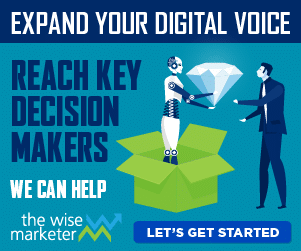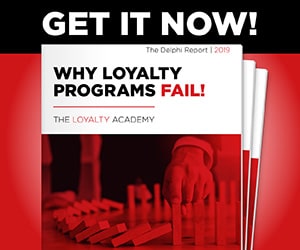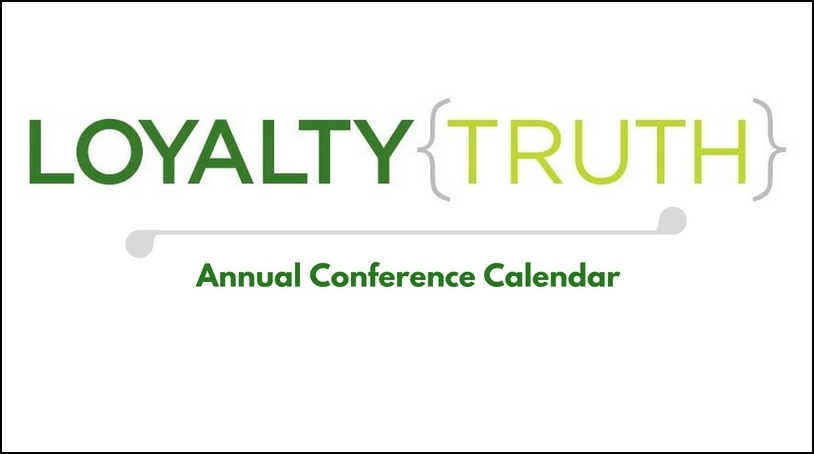Walking through the Loyalty Expo conference held May 23 – 25 in Orlando Florida, I was seeking to learn something new about the customer loyalty business. Case studies and program results are high on my list as first hand program evaluation metrics are closely held by most loyalty program sponsors. I did encounter a few interesting numbers and fresh perspective in a session presented by the leader of the Marriott Rewards program and I’ll share those with you in another post.
My other passion is to better understand how customer loyalty is evolving as a marketing discipline. Most loyalty practitioners acknowledge that programs designed up until the “great recession” in 2009 are in need of updating or even holistic re-engineering. The need for change is driven by two factors:
- New economics resulting from payment card interchange regulations, the accumulation of vast financial liability for unredeemed rewards currency by program sponsors, and information transparency / big data.
- Changing consumer behaviors generally attributed to Millennials but now extending across the entire population of “digitally conversant” consumers who see their mobile device as a primary interface with their favorite brands and define “rewards” in a constantly evolving manner.
The one session I discovered that addressed best practices in loyalty program design was delivered by Adam Craig, Director of Product Management for Deluxe Rewards. Adam’s premise drew my attention: that the loyalty and rewards industry has reached a point of maturity and there are more examples each week of brands undergoing major overhauls. He went on to document several examples of programs that have been modified, and shared his views on what is required to ensure that programs designed today will be as sustainable as possible, years into the future.
Simply put, Adam postured that companies often don’t design their program with the end in mind. He cited Steven Covey’s “7 Habits of Highly Effective People”, a book I have relied on to guide my own business. Mr. Craig redefined Habit 2: “Begin with the end in mind”, in loyalty parlance, saying that in many cases, Loyalty program strategy and design are often shortchanged in the early stages, leaving companies with a program that isn’t driving the right behaviors. Without swift corrective action, these programs are doomed to fail or, at the least, will cost the sponsoring brand more than it should through eroded gross margins or failure to shift profitable behaviors.
Adam’s point of view had foundations in the results of research commissioned last year by Deluxe Rewards with Forrester Research. Adam cited several interesting findings from the report, and I encourage you to download a copy here (link to: http://www.deluxerewards.com/how-it-works/download-forrester-report/).
Seeking to understand how loyalty program decision makers could optimize both their loyalty strategies and program structures, Forrester queried marketing executives and learned that it’s not just consumers that are unhappy with today’s loyalty programs. The survey found that surprisingly, only 16% of marketers were “completely satisfied” with their program performance.
Another 51% of those surveyed said their programs were “good enough”. This second finding caused some chair-shifting among delegates in the room. What marketing executive responsible for customer loyalty wants to be caught dead telling their CEO that their program is “good enough”?
At the top of the list behind the dissatisfaction cited among marketing execs were these failures in program performance:
- Failure to drive the desired engagement or purchase behaviors listed among objectives
- Inability to successfully glean meaningful insights from collected program member data
- Not reaching expected levels of customer satisfaction
These three items provide strong evidence to indicate marketers are in desperate need to review the way they plan and execute customer loyalty programs going forward.
Providing market examples to illustrate how brands are missing the mark with their loyalty objectives, Mr. Craig cited changes made to leading frequent flyer programs, and talked specifically about the customer experience at Panera Bread and recent changes made to Starbucks Rewards.
- The Panera Bread example illustrated how customer data collected does not always translate into offers that resonate with the program member. “Surprise and delight” is a great tactic, but offering a health-nut a cookie as a reward tells the member that “maybe” the brand could do a better job of interpreting data and matching rewards to personal preference.
- The changes at Starbucks Rewards have been well publicized and much discussed in the press. Regardless of how the changes were positioned to the market, Mr. Craig noted they represented a fundamental change in program economics to members and a valuable lesson to marketers about the importance of sensitivity analysis regarding outcomes and scenarios while designing programs up front.
Mr. Craig emphasized the critical need to balance business objectives and customer desires during the program design phase, and that marketers can never take their eyes off understanding how to identify, drive, and incent the right behaviors for all types of customers. He also noted that communications methods between brand and member continue to evolve.
He addressed the finer points of difference between “omnichannel” and “optichannel” marketing strategies and shared the nugget that brands should invest time to match channel preference to customer segments. Investing in this work upfront solves for “HOW” offers and rewards can best be delivered in the loyalty ecosystem, a point especially relevant for Millennials and Centennials.
Summing up, Mr. Craig share his short list of considerations to design a successful and sustainable loyalty program:
- Establish clear goals
- Create strategic alignment
- Maintain simplicity
- Generate value
- Attend to financial management
- Deliver on reporting & analytics
- Encourage continuous customer dialogue
Some client examples shared by Mr. Craig showed how Deluxe Rewards is reshaping its approach to program planning. He shared that Deluxe is focused on stimulating customer engagement and rewarding profitable customer behaviors, while delivering financial sustainability to the sponsoring brand. By offering a range of “managed liability” solutions, brands have the flexibility to craft compelling value propositions while keeping their future financial obligations within desired limits.
Through this forward-looking planning approach, and with an eye to customizing offers by customer segments, Mr. Craig suggested that Deluxe is effectively enabling the “Democratization of Rewards” – not a bad idea, especially in an election year!




